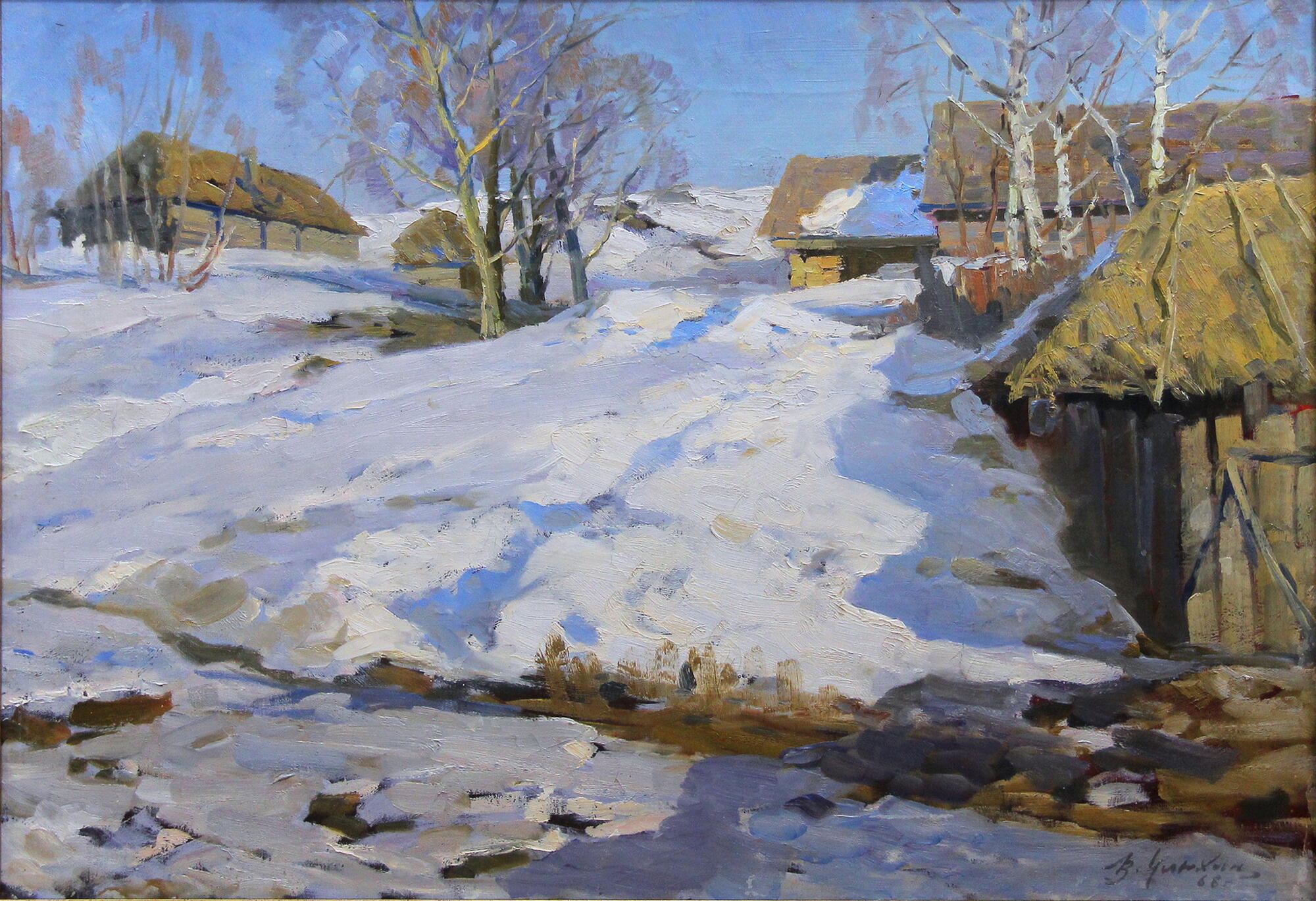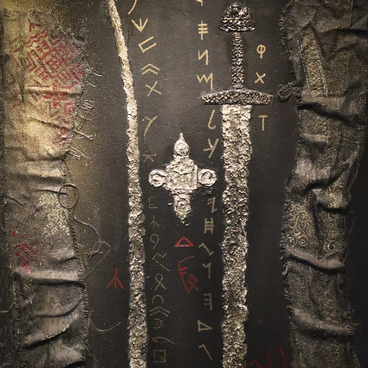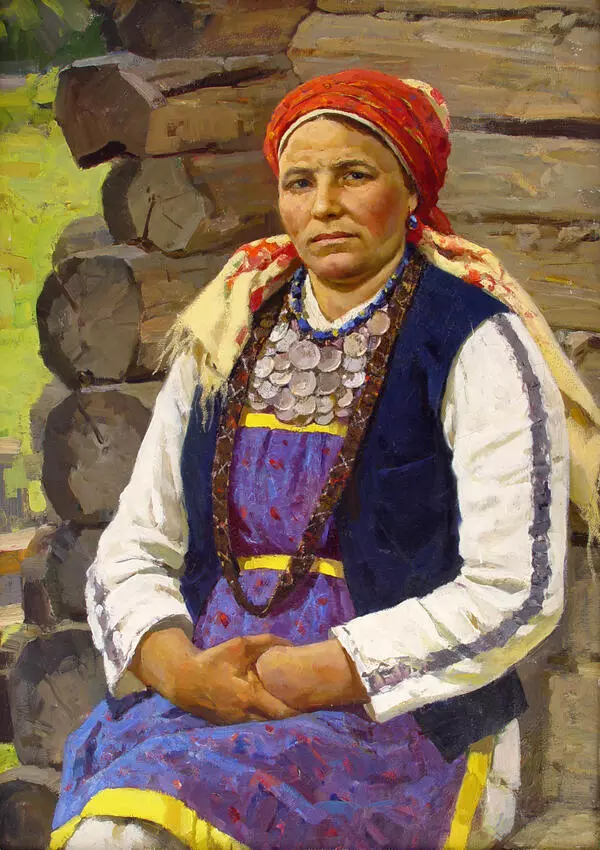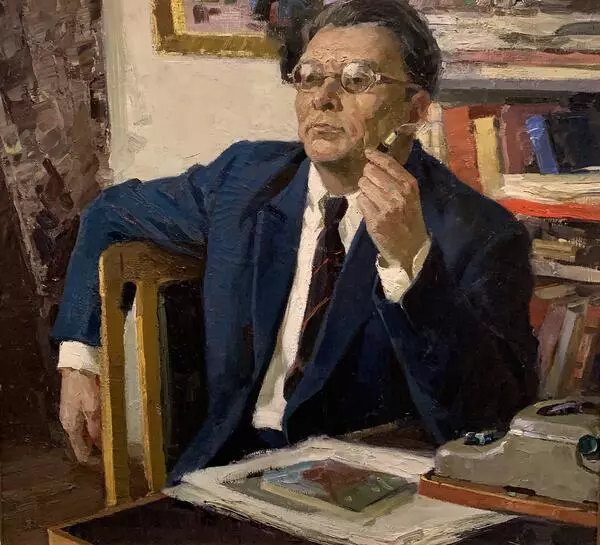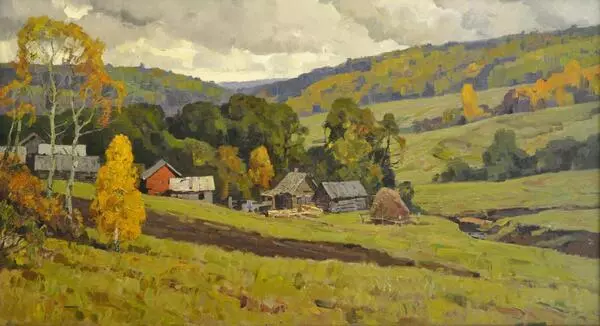Throughout his career, Vladimir Dmitrievich Ilyukhin was developing the philosophical theme “Earth and people”, which is a traditional topic for Mordovian artists. In his landscapes, the artist reflects on the eternity of nature, on the unbreakable bond between the earth and the working person. In nature, the artist sees a healing spiritual foundation. He paints landscapes which represent simple, cherished features of Russian nature that organically merge with Russian everyday life and customs. With a special inspiration, they celebrate the picturesque nature of Mordovia. This is what makes the canvas “Day in March” unique, full of spring air and light.
In this landscape, the artist managed to embody the immediacy of fresh perception of plein air painting. The work is imbued with a holistic, monumental and at the same time warm interpretation of nature. Vladimir Dmitrievich often chooses the transitional seasons — spring and autumn — as the subject for his canvases. They fully convey the dynamics of life and shine with majestic expressiveness.
The composition of the “Day in March” painting is characterized by balance and stability. The canvas impresses with a special luminosity of the color palette. The densest shadows and bright spots of light are saturated with color. The landscape is radiant with sunlight and the joy of waking up from winter sleep.
The optimistic and uplifting mood of the canvas, which promises springtime, is created by the contrast of the golden-ocher tone of the straw on the barn’s roof with the dazzling white snow of the hill, blue shadows on the snow and reddish-brown tree trunks, pink birch branches and blue sky.
Vladimir Dmitrievich Ilyukhin focuses a lot on the dynamics of the composition. The barns and houses climbing one after another up the hill and the shadows on the snow running away from them from the bottom upwards set a cheerful ascending rhythm of the composition, which enhances the joyful and cheerful mood of the work.
Traditionally, Vladimir Dmitrievich Ilyukhin does not paint people in his landscapes. However, in this painting, the depicted village houses and barns with thatched roofs create a sense of the invisible presence of people. The human world in this landscape is part of the boundless and harmonious world of nature.
In this landscape, the artist managed to embody the immediacy of fresh perception of plein air painting. The work is imbued with a holistic, monumental and at the same time warm interpretation of nature. Vladimir Dmitrievich often chooses the transitional seasons — spring and autumn — as the subject for his canvases. They fully convey the dynamics of life and shine with majestic expressiveness.
The composition of the “Day in March” painting is characterized by balance and stability. The canvas impresses with a special luminosity of the color palette. The densest shadows and bright spots of light are saturated with color. The landscape is radiant with sunlight and the joy of waking up from winter sleep.
The optimistic and uplifting mood of the canvas, which promises springtime, is created by the contrast of the golden-ocher tone of the straw on the barn’s roof with the dazzling white snow of the hill, blue shadows on the snow and reddish-brown tree trunks, pink birch branches and blue sky.
Vladimir Dmitrievich Ilyukhin focuses a lot on the dynamics of the composition. The barns and houses climbing one after another up the hill and the shadows on the snow running away from them from the bottom upwards set a cheerful ascending rhythm of the composition, which enhances the joyful and cheerful mood of the work.
Traditionally, Vladimir Dmitrievich Ilyukhin does not paint people in his landscapes. However, in this painting, the depicted village houses and barns with thatched roofs create a sense of the invisible presence of people. The human world in this landscape is part of the boundless and harmonious world of nature.
